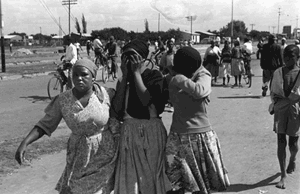This Day in History: August 26, 1960
Additional Date: August 26, 1960
This was the first such declaration of a State of Emergency by the Apartheid state. During these periods, the government had free reign to suspend civil liberties. Police could detain anyone for reasons of "public safety", without any appeal to the courts. Public meetings and gatherings were typically outlawed as well. During the 1960 State of Emergency the government banned all pubic meetings greater than 3 people. The event that inspired the State of Emergency took place in the township of Sharpeville, near Vereeniging in the Transvaal. On March 21st the PAC led what was supposed to be a peaceful demonstration against pass laws. Police responded by firing on a crowd of 300 unarmed protesters. 69 were killed and at least 180 were injured, many shot in the back while fleeing in panic. This event signaled the start of armed resistance in South Africa, as it became clear to many that means of passive resistance were ineffective against the Apartheid regime. During the State of Emergency that followed, key African leaders were imprisoned in a series of mass arrests, including Robert Mangaliso Sobukwe, leader of the Pan Africanist Congress, and Chief Albert Luthuli. The government also banned the African National Congress and the Pan Africanist Congress as part of the Unlawful Organizations Act.
